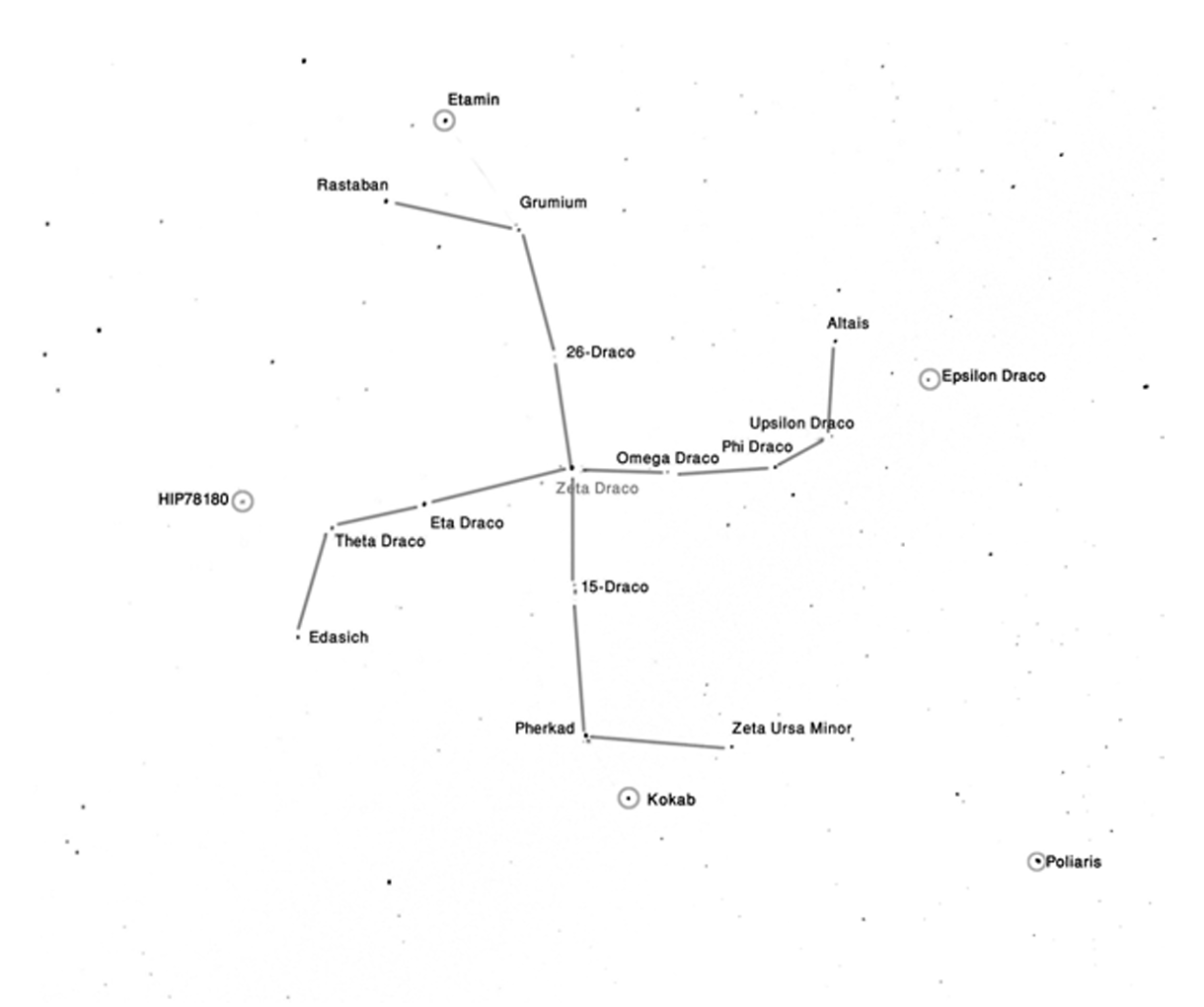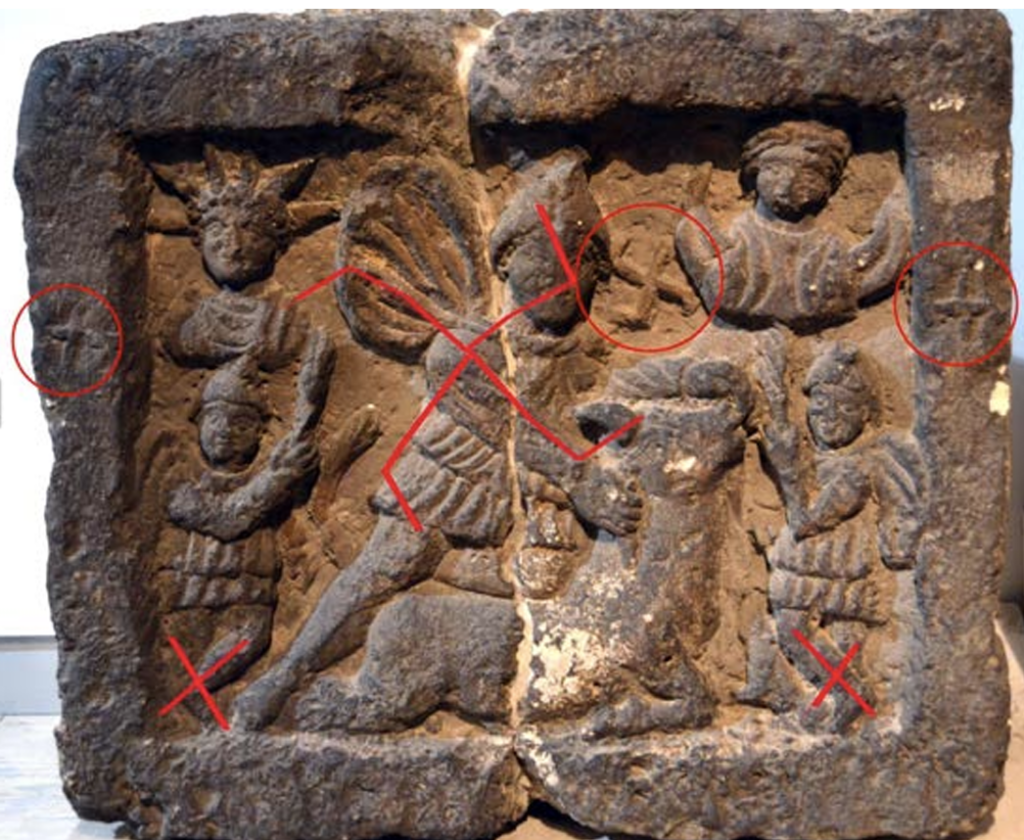Reza Asssai
Canada
reza.assasi@mail.mcgill.ca
Introduction
The earliest identified Christian church, dating back to 233 CE, was discovered in the city of Dura-Europos, located in northeast Syria. This city, situated at the crossroads of antiquity between the Persians and Romans, was founded by the Parthian Persians in 300 BCE and later seized by the Romans in the mid-second century CE. Dura-Europos was a multicultural city where multiple languages were spoken and various religions and cults were practiced freely.
Notably, a synagogue and a Mithraeum (a Mithraic temple) were found on the same street as the church, just a few footsteps apart. Some architectural details of this church resemble those of the Mithraeum1.
The cosmology of the Roman mystery cult of Mithraism fundamentally influenced (and to some extent shaped) early Christian mythology, symbolism, and architecture. This study is based on a comparative analysis of Roman Mithraic artifacts and architecture in relation to early Christian symbolism and architectural concepts, a detailed examination of astronomical models to understand Mithraic iconography, and a historical investigation of Mithraic mythology and its origins in the east.
Mithraism
Mithras is an ancient Indo-Iranian god (known as Mithra in the east) and a divinity associated with astrological time, represented as an anthropomorphized celestial body in the northern sky.2 The first surviving record of the name dates back to the fourteenth3 century BCE in Asia Minor in a
peace treaty between the Hittites and the kingdom of Mitanni.4 The Roman mystery cult of Mithraism, known by Romans as “the Mysteries of Mithras” or “the Mysteries of the Persians,” appeared in the Roman world much later, in the first century CE, and continued until the fourth century CE, when it was eventually supplanted by Christianity. Due to the secretive nature of the cult, almost no firsthand accounts of its practices have survived. Nonetheless, thousands of archaeological artifacts from across the Roman Empire have been unearthed. As a result, the majority of research on Roman Mithraism centers around interpreting this physical evidence, leaving the cult’s origins a subject of ongoing debate5.
The original concept of Mithras in the east was inspired by a geocentric understanding of an astronomical phenomenon called the precession of the equinoxes. This phenomenon, caused by a very slow wobble of the Earth, shifts the equinoctial constellations one sign every two millennia. This astrological concept of the great cycle of time was represented by deities, including Mithra, and later developed into a mystery cult in the Roman era. The original symbol of Mithras appears to be the broken cross, which is the geometric pattern of the star map of the ecliptic pole (centered on Zeta Draco and consisting of the stars of constellations Draco and Ursa Minor.
Figure 1). This cross symbol, representing the center of the ecliptic (and thus the center of the twelve signs of the zodiac) and more common in the east, is also associated with the Roman Mithras6 (Figure 2). In fact, the Roman Mithras is an elaborated form of this star map and possibly the origin of the Christian core symbol of a crucified god surrounded by twelve disciples. The mysterious astrological scene of Tauroctony likely carries the message of the commencement of the Age of Pisces-Virgo in the first century CE, marked by the processional arrival of Spica (the house of bread) the brightest star of the constellation Virgo (the virgin) on the celestial equator and its rise on the cardinal east7 (Figure 3). This cosmological understanding of space-time played a key role in shaping Mithraic temples, Christian symbols and mythology, and early Christian churches as east-oriented basilicas with a cross at their focal point.

Figure 1. Proposed celestial broken-cross. (Diagram by author)

Figure 2. Tauroctony of Gigen with a broken cross in the middle and two crosses on either side. CIMRM 2247 (Diagram by author)

Figure 3. Proposed Mithraic cosmic clock with Mithras representing the center of precession and Spica arriving on the equator by the beginning of the first century CE commencing the age of Pisces-Virgo (Diagram by author)
The architecture of Mithraea and Christian Basilica
The architecture of Mithraea is distinctive and consistent, typically featuring a basilica-type, vaulted, cave-like dark chamber with a tauroctony at one end. Porphyry reports that the Mithraeum is designed like a cave because the cave symbolizes the cosmos8. Interestingly, the ceiling of the church in Dura-Europos is decorated with stars very similar to the mithraeum in the same street. Regardless of the existence of star and cosmos graphics on the ceiling, the most dominant element of the Mithraeum is the tauroctony at the center of the corridor, with an arch above the bull-slayer displaying the zodiac aligned with the Mithraeum’s vault. The architectural concept of the vaulted shape of Roman Mithraea in relation to the Mithraic tauroctony scene is a symbolic representation of the cosmos revolving around the north ecliptic pole. Mithraic cosmology which influenced the architectural design concept of Roman Mithraea, may have carried over into early Christian understanding of sacred worship space. Tauroctony is an astrological coded message showing Mithras (as the celestial cross anthropomorphized by a young man) in the center, encompassed by the twelve signs of the zodiac (Figure 4).
In conclusion, the connections between Mithraism and early Christianity are evident through shared iconography, symbolism, and cosmological concepts. The complex religious landscape of the ancient world allowed for the exchange and adaptation of mythologies, rituals, and symbols between different religious traditions, such as Mithraism and Christianity. The syncretic nature of the Roman Empire facilitated the intermingling of ideas from various cultures and religions, leading to the borrowing, adaptation, and transformation of religious ideas and symbols to meet the needs of diverse communities. As a result, the cosmology of the Roman mystery cult of Mithraism played a significant role in shaping early Christian mythology, symbolism, and architecture.

Figure 4. Left: Mithraeum of Dura-Europos, Yale-French Excavations at Dura-Europos, Right: Mithras at the focal point of this room is the personification of the cosmic cross and the processional cycle of the cosmos representing the arrival of the age of Pisces-Virgo. (photo by author)
- Susan B. Matheson, Dura Europos: The ancient city and the collection (Yale University Art Gallery, 1982) 18
- According to Mehr Yasht of Avesta Mithra rises above the Alborz mountains with a chariot decorated with the stars and never sleeps with his thousand eyes open.
- Robert Turcan, The Cults of the Roman Empire (Hoboken, NJ: Wiley-Blackwell, 1996), 196.
- Paul Thieme, “The ‘Aryan’ Gods of the Mitanni Treaties,” Journal of the American Oriental Society 80.4 (1960): 301–317.
- Roger Beck, “On Becoming a Mithraist: New Evidence for the Propagation of the Mysteries,” in Religious Rivalries in the Early Roman Empire and the Rise of Christianity, ed. Leif E. Vaage. (Waterloo: Wilfrid Laurier University Press, 2006), 182.
- Assasi, Reza. Swastika: The Forgotten Constellation Representing the Chariot of Mithras. In Ancient Cosmologies and Modern Prophets: Proceedings of the 20th Conference of the European Society for Astronomy in Culture (Ljubljana, Slovenia: Slovene Anthropological Society, 2013), 407-418.
- Assasi, Reza. The Gate of Heaven: Revisiting Roman Mithraic Cosmology. In Inspiration of Astronomical Phenomena VIII: City of Stars, edited by B. P. Abbott (San Francisco, CA: Astronomical Society of the Pacific, Astronomical Society of the Pacific Conference Series, 2015), 233-248.
- Porphyry. Cave of the Nymphs in the Odyssey: A Revised Text With Translation. Seminar Classics 609, State University of New York at Buffalo. Buffalo: Department of Classics, 1969.




